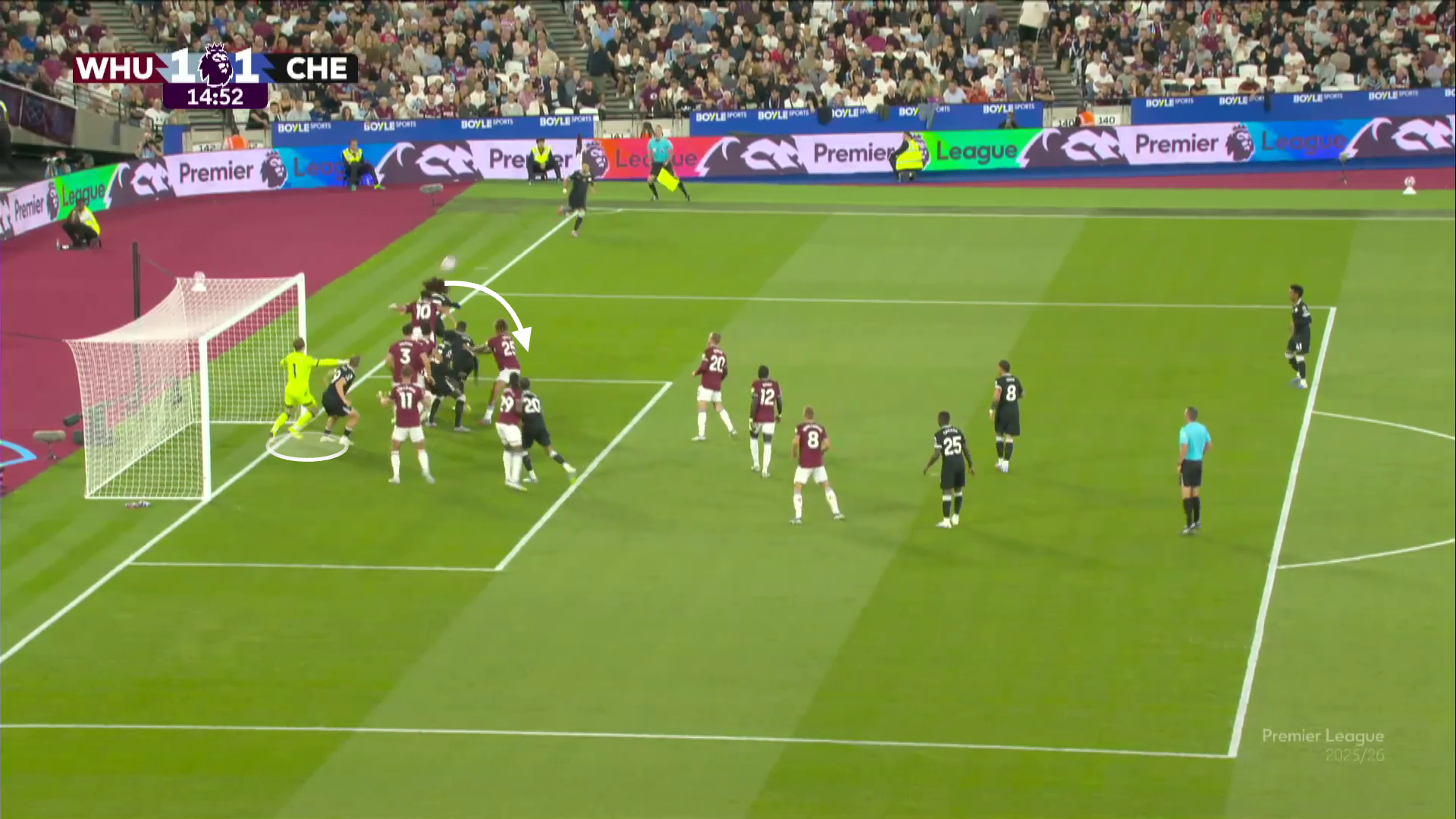
Why West Ham Keep Conceding from Corners in the Premier League
West Ham’s Set-Piece Crisis: Why They Keep Conceding from Corners
West Ham United’s alarming start to the 2025-26 Premier League season has been defined by poor defending — particularly from corners. Languishing in 19th place, Graham Potter’s side have already conceded seven goals from corners in just five games, prompting serious questions about their defensive structure.
This analysis uncovers the tactical breakdown behind their struggles, with examples from recent defeats against Chelsea, Tottenham, and Crystal Palace.
1. The ‘Blocker on the Goalkeeper’ Tactic
Against Chelsea in August (5-1 loss), one repeated tactic stood out: Liam Delap played the role of “goalkeeper blocker”, standing right next to West Ham keeper Mads Hermansen to restrict his movement — without committing a foul.
-
This tactic mimics a basketball-style screen, obstructing the keeper’s path to the ball.
-
Chelsea flooded the six-yard box, limiting Hermansen’s visibility and mobility.
-
For Chelsea’s first goal, Delap crowded Hermansen while Marc Cucurella flicked a near-post delivery onto Joao Pedro, who scored unmarked.
Why it worked:
Referees are becoming more lenient on contact with goalkeepers in crowded boxes. Without proper defensive shielding, Hermansen is consistently exposed.
2. Overloading the Far Post – Spurs’ Exploit

Liam Delap blocks West Ham’s keeper before Cucurella’s flick-on finds Joao Pedro in space
In their September match, Tottenham bypassed the near-post threat and instead targeted the far post.
-
West Ham had committed extra defenders to the near post due to Chelsea’s success.
-
Spurs outnumbered West Ham 2v1 at the far post, leaving Pape Matar Sarr unmarked.
-
With looping delivery and clever blocking, Sarr’s header went unchallenged.
Key tactic:
Spurs attackers “screened” defenders by standing behind them, preventing Potter’s players from recovering ground.
3. Crystal Palace’s Complete Routine: Blocker + Screen + Far Post
Palace’s corner goal last weekend was a masterclass in modern set-piece choreography.
-
Jean-Philippe Mateta acted as a goalkeeper blocker (this time on Alphonse Areola).
-
Adam Wharton screened off Marc Guehi’s marker, letting the Palace captain run free.
-
Chris Richards and Maxence Lacroix blocked additional defenders from tracking back.
Guehi’s header hit the crossbar, and Mateta — now completely free after screening Areola — easily tapped in the rebound.
What made this devastating:
Every defensive weakness exploited — blocked keeper, overwhelmed far post, and poor recovery routes for defenders.
Can Potter Fix It?
West Ham’s problems at corners are tactical, not simply individual. And that’s particularly concerning for Graham Potter, who has a reputation for intricate preparation.
In the past, West Ham under David Moyes were one of the Premier League’s strongest set-piece sides, using aerial threats like Kurt Zouma, Tomas Soucek, and Declan Rice effectively. Today, the roles are reversed — the Hammers are being outmaneuvered using the same tactics they once mastered.
Set-piece coaches across the league are studying weaknesses with high-resolution analytics and tailored drills. West Ham need a dedicated response — possibly with a new set-piece coach, revamped defensive structure, or a change in zonal/man-marking hybrid systems.
Final Word
Set-piece goals now account for over 30% of goals in the Premier League, and if West Ham can’t adapt, they will remain vulnerable — not just from elite sides like Chelsea, but every well-drilled team in the division.
If Graham Potter is to survive mounting pressure, fixing corner defence must be priority #1.












































There are no comments yet. Be the first to comment!